Linen, paisley and velvet interiors: de Le Cuona
I recently followed a thread of interest from shirtmaker Emma Willis, to the slow-woven fabric of her dressing gowns, to the company that produces them, de Le Cuona.
It was a fairly speculative journey. I had no idea whether anything I discovered at the other end would be useful, and the result of such pursuits often aren’t. But then I don’t write about those.
In this case, obviously, it was.
In de Le Cuona I discovered an interiors company that has a lot in common with the clothing we cover: natural fibres, finest quality, handmade production and a subtle, elegant aesthetic. In a world that is often fashion-led and nearly always mass-produced, de Le Cuona interiors are quite unusual.
Indeed, many of the fabrics had me wondering whether they could be made into tailoring, or other menswear. But more on that later.
First I want to explain what Bernie de Le Cuona does: when I started writing the occasional article on interiors earlier this year - first Navajo weaving and then tribal rugs - I said I thought readers would like them because they already appreciate the pleasure of great fabrics. De Le Cuona is the best example of that so far.
If you’ve seen the hand-woven paisleys that Emma Willis uses for her dressing gowns, you’ll understand how distinct they are from the tailoring materials usually used for gowns.
But assuming most people haven’t, I’ll try and describe them.
The material is quite open and loose, with individual threads noticeable in the spaces between the motifs. It’s detailed, with fine lines describing the leaf-like paisley, the buildings, and other elements of the design. And although some versions look quite uniform, there are often up to 14 subtle colours.
The fineness is obvious if you compare one of the Indian paisleys such as Victoria, with the Scottish versions Bernie also offers, such as Contessa. The latter is still lovely, but many of those details are lost.
“The fineness comes from the weaving being done so slowly,” Bernie explains. “Even with the more modern looms they use now, only about three metres can be made a day.”
The paisley also has an interesting mix of lightness and warmth, due to being 70% wool and 30% cotton. “The wool on its own was a little too warm and a little too rough. We added the cotton to make it softer and immediately comfortable.”
Bernie has been selling the paisley for more than 20 years, having originally discovered the makers while travelling in India. For a long time she had to source everything for the production, including particular fibres and dyes.
Today the operation is more established. She found new looms that weren’t quite so temperamental, but could produce the same fineness, and an employee in Mumbai manages the production locally.
The fabrics are mostly bought by customers by the metre, for curtains. They would be a bit too open for tailoring, and hard to work effectively with an iron. But they work very well for dressing gowns.
(And indeed, for wall coverings - one of the Emma Willis changing rooms in London is covered floor to ceiling in one paisley design.)
If paisley led me to de Le Cuona, most of the further discussion was about linen.
Linen is Bernie’s specialty, and accounts for around 80% of sales. A quick look at the linen page of the website will illustrate quite how many variations there are, but the range is dominated by neutral, earthy colours - textured, printed, even sometimes painted, but always subtle.
When Bernie and I met at her showroom in Belgravia, she had just returned from a trip to the US. This is a big market for her, with two showrooms in New York and 12 representatives around the country.
“In some parts of the US though, Simon, they just don’t understand these colours,” she says, pointing at a range of earthy linens and silks. “Everything has to be brighter and bolder. I prefer more natural tones, particularly at the moment - like your suit in fact.” (My double-breasted cord suit from Anderson & Sheppard.)
The image above gives a good sense of this aesthetic: large herringbone curtains, delicately patterned sheets, slubby throws and rugs.
A few of the linen fabrics struck me as particularly nice, probably because I could see echoes of them in tailoring.
These included Primitive Linen (above), which is designed to resemble old French bed linen, and Vintage Canvas, which is stiffer but has a similar slubby texture. A version of the latter is even available that is painted white on one side and then stone washed, to remove the paint from the raised areas. It was lovely - though perhaps not the safest with small children around.
Another quality that appealed was Artist Canvas, which is lighter than the other two and comes in great washed colours, like Terracotta. And finally Origami, a lightweight linen with a crisp, papery texture.
Of course, tasteful interior design does not usually mean decorating your home with the fabrics you like to wear as clothing. It requires different considerations, as well as an awareness of simply blending in with the sofa.
But these particular linens did make me think about whether they (or versions of them) would work as a bespoke jacket. My next stop will be an old friend from an Italian mill, to see what he thinks of them.
I thought the same with the velvets, which were the last area Bernie and I looked at together.
As far as I’m aware, no tailoring merchant still offers silk velvet. There is one producer I know, but they don’t sell by the cut length. Everything is cotton.
I love cotton velvet, and have a wonderful jacket from Cifonelli that uses it. But I understandably took notice when Bernie showed both silk and cotton/cashmere velvet.
The cashmere version turned out to be far too heavy for tailoring. Which is a pity because the colours - two murky greens and similarly dark purple - were perfect. The silk velvet is likely, too, to be too delicate for a jacket. But again I’ll ask around just in case.
In the meantime, if I ever decide to use velvet upholstery, this is where I would come. I’ve also got my eye on two linen fabrics for curtains - the ones we took from our old flat have always been a little too short anyway. And while waiting for that I’ve been browsing the accessories, such as the cushions and throws.
If you’re able, it’s worth visiting the Belgravia showroom (below) in person, just because the fabrics are all so tactile.
I also haven’t had space here to cover the quality points of de Le Cuona, such as the long-staple Belgian linen, and it’s worth having someone walk you through that.
It is, of course, a great area of London in general for interiors; a long-time favourite of mine, Robert Kime, is just round the corner. If you visit both, sit down for a coffee in between at Hagen, perhaps browse a few specialist vintage shops, it’s a very pleasant morning .


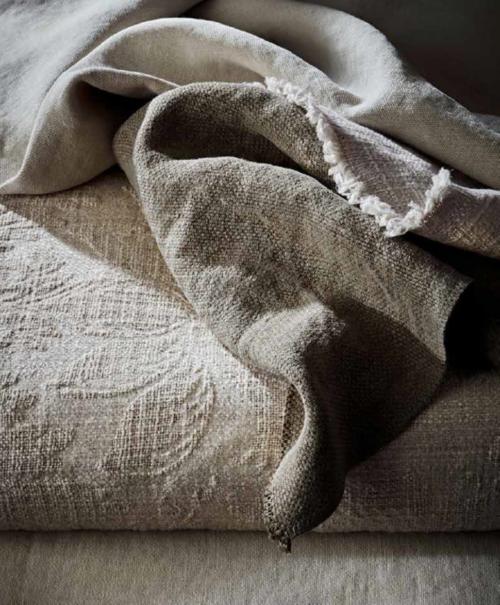
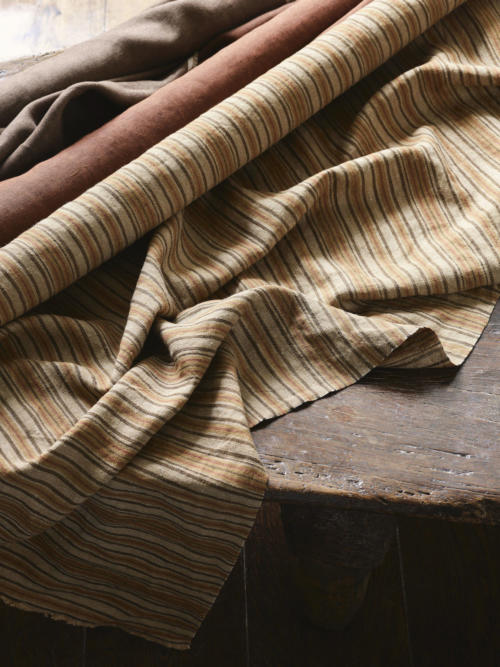
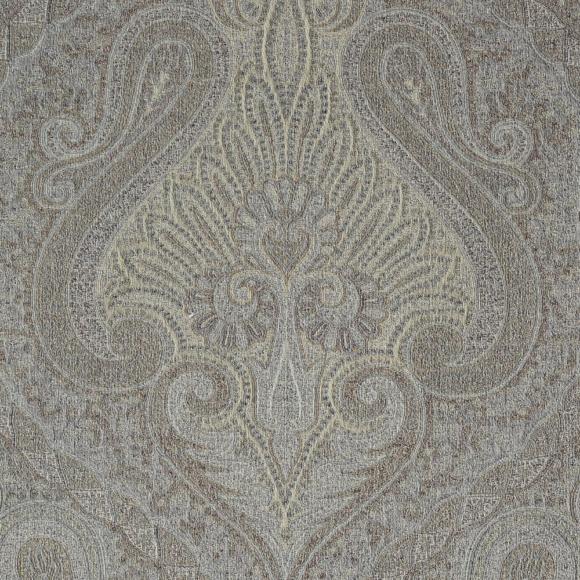
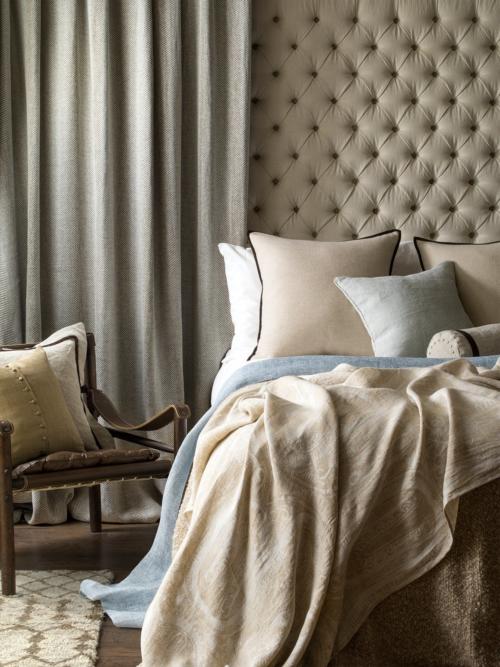
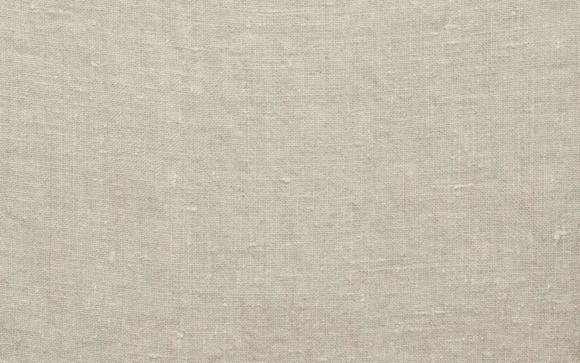
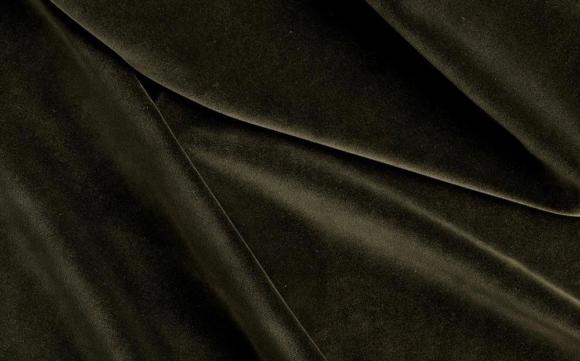
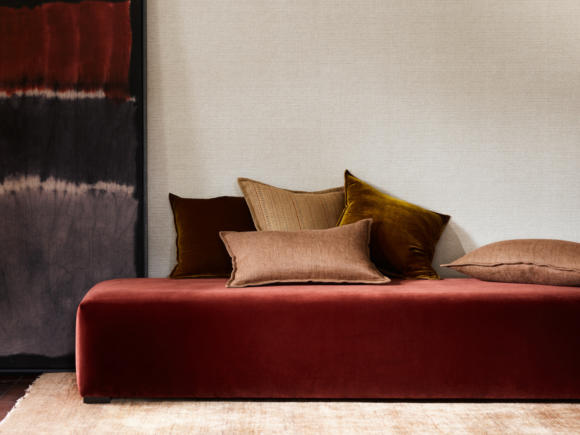
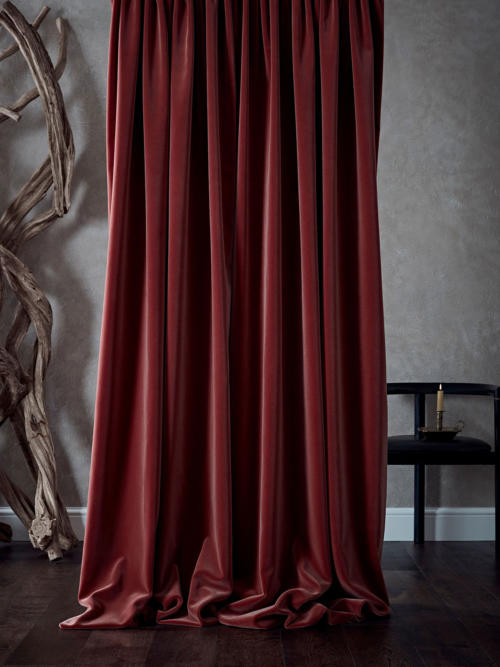
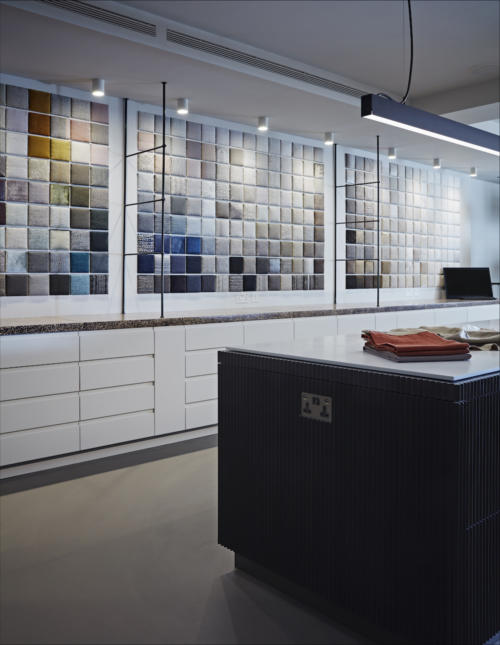
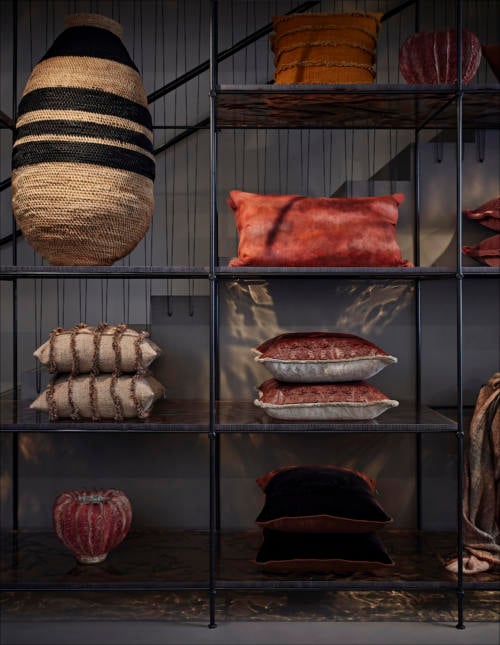
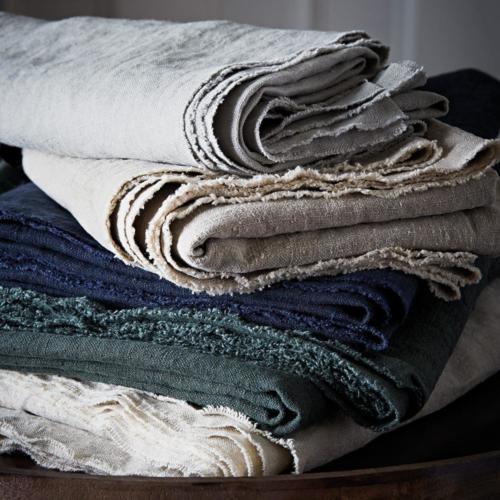


























Simon I am so glad you are finally going into interior design.
I recently acquired some beautiful vintage bedding made of French linen. Apart from some stubborn stains, they look wonderful.
Any thoughts around lampshades? I am looking for inspiration here and am sure PS will come up trumps.
Thanks Toby.
I haven’t really looked into lampshades I’m afraid. I guess because the material matters less – obviously it matters what it looks like, pattern and texture, but it’s not draping and you’re not going to feel it at all.
I’ve been eyeing up that Emma Willis dressing gown for a while! Did you end up getting it? Nice article, thank you!
No worries. No I didn’t actually, I ended up with a different gown – more on that in a separate piece.
The fabric is beautiful though.
Simon, would you mind giving a teaser as to why you didn´t go for the Emma Willis/ de Le Cuona paisley gown and which one you chose instead? As per my prior comment on Budd pyjamas, I’m also looking for a dressing gown and this one looks ideal – wool but with paisley. Thanks very much in advance.
There will be a post on mine next week JH, so you don’t have to wait long. But it was a plain cashmere from Budd
“Thread of interest….” ?
When I asked the rep for an Irish linen house what the difference was between their apparel fabrics and home furnishing fabrics, he said that the latter had to pass a rub test (to survive as upholstery) but also a sun damage test (to survive as curtains) so even home furnishings fabrics of a tailoring weight may feel and tailor very differently from fabrics purpose-woven for clothing.
Thanks A. Yes, good points.
I don’t think that necessarily means the fabrics are actually made any differently though. It’s not as if they’re usually treated (at this top end), but rather just that only some weights and densities of fabric pass those tests, if that makes sense.
Good morning..interesting article….I will past this on to my wife..any interior designing to our house that’s her baby…..everyone stay safe..it is snowing right now in NYC…..PEACE!!!!!
This is really beautiful, Simon.
I have to say, as much as I appreciate and enjoy the articles focussed directly on how to dress, it’s these quiet, tactile pieces that dive into those little tributaries running just alongside tailoring that have kept me reading for the best part of 10 years.
And in all that time I haven’t commented before, so I figured it was time I expressed my appreciation. That’s all!
That’s really lovely to hear Conor, particularly from someone that has never commented before
The link to the “Victoria” paisley no longer works, btw, so the intended contrast cannot be drawn!
Really Ben? It seems to work for me
Ah—what happens is that it loads the page for an instant, then redirects to “usa.delecuona.com”. THIS link, however, does work for me: https://usa.delecuona.com/collections/paisley/products/victoria-moondust (whereas you have: https://delecuona.com/collections/paisley/products/victoria-moondust-2).
Strange!
Aha, thanks. I think that may be because it is detecting your location, and so redirecting you to the US website. Mine points to the UK website
Simon, L’Opificio does sell silk, cotton, viscose, kid mohair, and linen velvets by the cut length.
https://shop.lopificio.com/en/catalog/velvets
Thank you James. Unfortunately the silk velvet from de Le Cuona looks like it is going to be too light and loosely woven to work for tailoring. Do you know much about the way this velvet is made up?
Unfortunately not Simon. I love velvet so I had looked around but didn’t enquire.
With regard to alternatives, I’ve stumbled upon a 100% cupro velvet dinner jacket on Mr Porter this season, a RTW wool velvet from Sexton on The Rake, and Tom Ford is obviously known for its viscose–cupro velvet jackets.
Wouldn’t those work just as well? Do you have any experience with either cupro or viscose–cupro velvets? They seem to be hard to find—in fact, it’s the first time I saw a 100% cupro velvet jacket.
I don’t have experience with either, no, though from what I’ve seen of silk, it really is better in feel than cotton or wool. It has such greater malleability and iridescence and lightness
Simon – thank you for this. Many of your readers, I’m am sure, share an interest in material and cloths, which are usually written about here in the context of clothes. Linen is interesting. I’ve had a few linen suits made, but also like to see what other uses there are for the cloth, using it for dining (as apposed to cotton, which nearly all restaurants use). Ferguson Irish linen do some excellent double damask table cloths and napkins, for example. It’s good to support these traditional industries where we can.
Thank you Stephen, great to have other recommendations
Some 10 years ago I was traveling in Korea, and stopped for a day or two in the city of Jinju, in the southwest, a place famous for its silks. In one of the shops selling fabric by the length I found a magnificent piece of aubergine-colored silk velvet, with an iridescence not dissimilar to silk Iranian carpets.
Even though I don’t dress in velvet jackets, I wanted nothing else but to have that particular piece made up into one, carrying it for weeks in my rucksack be damned, but was informed that it had already been sold and a customer would be picking it up shortly.
My wife has a scarf she bought there, a gossamer piece of natural-dyed silk in multiple shades of purple, all of them very earthy and subdued compared to regular Korean colors, which tend to run wild.
A place to keep in mind, perhaps, for when travel between East Asia and Europe returns to something resembling its pre-covidious state.